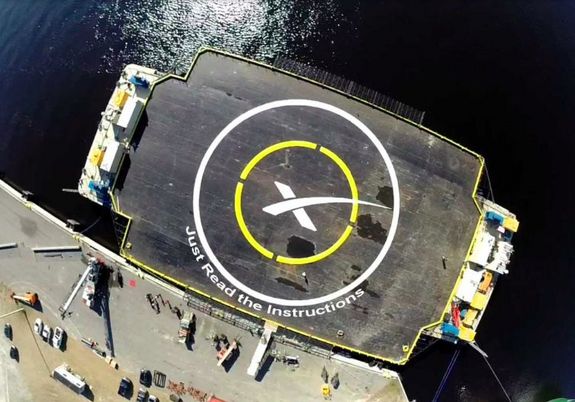SpaceX has been making waves and gathering attention recently with the landing of the first stage of their Falcon 9 rocket last month at the Cape Canaveral launch site. This feat accompanied a flawless satellite deployment mission, deploying into orbit 11 Satellites for Orbcomm. By landing the first stage of their rocket, they made history as the first payload delivering rocket to land its first stage back on the Earth (Jeff Bezos’s company, Blue Origin, landed their sub-orbital rocket, the New Shepherd, the month before in a test at their rocket range in West Texas, which was also an amazing feat). Earlier today, SpaceX launched another successful mission, delivering the JASON-3 satellite into a polar orbit whilst bringing their first stage back for a “somewhat” soft landing on their ocean barge, christened “Just Read the Instructions.”

While their last mission had them landing their first stage on land back at Cape Canaveral, Florida, this mission was different. This mission was a more high velocity mission (needed for a high polar orbit), which took them further downrange, and left them with less fuel for their landing attempt.
As Mr. Musk tweeted on January 11, this mission required the droneship. SpaceX has attempted 2 previous landing attempts on their drone ship, both of which ended in explosions that Mr. Musk likes to call “Rapid Unscheduled Disassembly,” or RUDs. Landing on the droneship, like it may seem, is a lot more difficult than landing on the land, much like it is harder for a pilot to land on an aircraft carrier than it is to land on the ground. A surface in the ocean is victim to waves, causing rotation and translation (there were swells today of around 4-5 meters, or around 15 feet). To land a rocket on this droneship requires that the droneship stay perfectly in place, allowing the rocket to land on target, which in this case, is in the middle of the X on the barge (X marks the spot!).
If you watched the video feed, you would know that just before the landing, (about 20 seconds prior), the command center in the SpaceX HQ in Hawthorne, California, lost satellite contact with the droneship, meaning that there was no live video feed of the landing attempt. Not too long after, SpaceX tweeted out that the first stage had landed on the droneship, but that it looked like a hard landing. (This is usually where I have to remind people that landing a rocket on this droneship is like throwing a penny up from the sidewalk, bouncing it off the tip of the Empire State Building, and having it come back down and land in the center of a walking, or rather stumbling, drunk’s hat. Not an easy thing to do for anyone. The important part was that the primary mission was still going flawlessly.
A little while later, news broke that the first stage had set down softly at a good velocity, and within 1.3 meters of the target landing zone on the droneship. It was a soft landing! However, one of the landing legs hadn’t locket. Once the rocket’s engine had powered off and there was no more upward thrust, the mass of the rocket overtook and buckled the weak leg, causing the rocket to tip over and go through an “RUD.” Later even, pictures and video were posted on Twitter and Instagram by SpaceX and Mr. Musk, showing the moment that the landing leg buckled.
While it wasn’t a fully successful landing (so close!), it teaches us a lot on how to do better next time. Mr. Musk expects that there will be many more RUDs in the future of SpaceX (and space exploration in general… It’s not a very “safe” industry), but it seems like he looks forward to pushing on and striving in the space industry, and even leading our way to being a multi planetary species with the eventual colonization of Mars.
I personally think it’s awesome that SpaceX is able to do so well in an industry like this, and lead the way past so many barriers that stand in our way to get out into the cosmos and explore the stars, and I’d like to thank them for everything they do!
My name is Joseph Davis. I’m currently a student in physics and astronomy at the beautiful University of Montana. I work for the Montana Space Grant Consortium doing public space and science outreach.